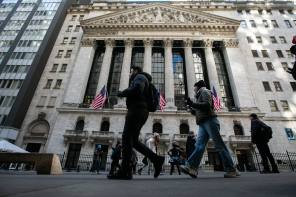
Article 3 / 3
Absolute Return Funds - June 2013Top performers are finally emerging
It is fair to say that absolute return has perhaps not delivered as expected and certainly not as promised.
The dream of an ‘all weather’ return of 10 per cent per year has proved just that, a dream. Nevertheless, looking at the sector as a whole does a disservice to a number of funds that have delivered strong performance. Which are those funds? Do the top share any characteristics from which investors can pinpoint the absolute return winners of the future?
Judging the success or otherwise of an absolute return fund is not straightforward. First, they are based on different asset classes – bonds, equities and blended asset allocation funds. They also have different return objectives. Within each asset class, some will strive to be wholly market neutral, while others will have market directionality built in.
Tim Cockerill, head of research at Rowan Dartington, says: “It is a mishmash of a sector, unlike other sectors such as UK Equity Income where you know what you’re getting. Not so with absolute return. It’s important to understand what a fund is doing before you invest – unfortunately, most of them don’t have a long record.”
John Husselbee, chief investment officer at North Investment Partners, says: “When it comes to absolute return, what you’re focusing on is individual alpha. There is no such thing as an homogenous return for absolute return. The past 12 months have shown that some funds are up 20-25 per cent and others have shown a negative return.”
With that caveat, Mr Husselbee says that those managers who are running macro-type strategies, where they are striving to make asset allocation calls on currencies or bonds, have done poorer in the past year than equity-focused managers.
“They have the ability to run with a long bias and equities as a whole have done well,” says Mr Husselbee.
Does that mean the top performers in the sector have simply been those with a long equity bias? Pat Connolly, head of communications at Chase de Vere, says: “The performance of absolute return funds has improved, although the impression is that this is because equity markets have done well.”
But there are other factors at work, particularly for the top performers. Mr Husselbee says that the past year has been a better environment for stockpicking, as the dispersion between the best and worst-performing stocks has grown.
Barry Norris, manager of the IM Argonaut European Absolute Return fund, also refutes the idea that stronger performance is simply down to market movements: “The aim of absolute return funds is to deliver consistent, positive returns with low volatility. It is always easier achieving this when your asset class is in a bull market.
“Any discerning investor should be looking at the net and gross exposure of long/short equity funds. What has been the standard deviation and beta of the absolute return fund versus the market? On our absolute return product year to date, we have achieved a return that is significantly in excess of the market return.”
He urges investors to look at funds that performed well in 2011, rather than just those that are top spanning three years. While there are some names in common – the Cazenove UK Absolute Target and Absolute UK Dynamic funds, for example – the top-performing Odey UK Absolute Return fund only protected capital in 2011, but has seen its strongest performance in the rising equity markets of 2012 and 2013. Funds such as the Argonaut European Absolute Return, the two Cazenove funds and the Threadneedle UK Absolute Alpha Retail GBP, have provided more even returns.
It is also worth looking at a number of the asset allocation funds. These have good long-term performance, in spite of losing out to the long/short equity funds in the short term. The funds that stand out are the Standard Life Global Absolute Return Strategies (Gars) and Newton Real Return funds. The Gars fund saw its strongest performance in 2009 and 2010, but has been grinding out a steady 6 per cent per year since. The Newton Real Return fund has been stronger in times of rising equity markets. Its weakest year was 2011, when it dropped 0.8 per cent.
In spite of the bull run in bonds, only the Henderson Credit Alpha and Threadneedle Credit Opportunities funds stand out as strong performers. However, when the interest rate cycle turns, the performance of these funds relative to, say, strategic bond funds should start to look better.
It would be wrong to dismiss the absolute return sector in its entirety. There are good funds doing exactly as they promised and this is not simply the result of rising markets. It is a sector still in its infancy, but there are some early winners emerging.
Cherry Reynard is a freelance journalist



